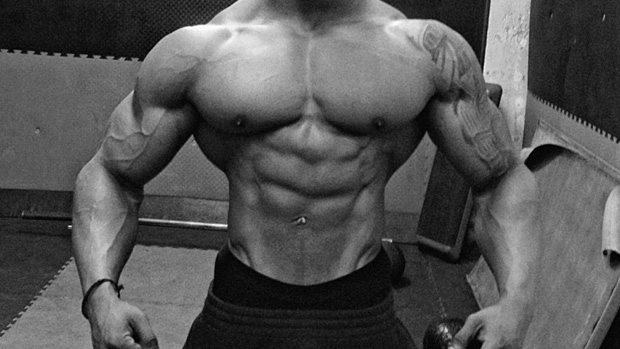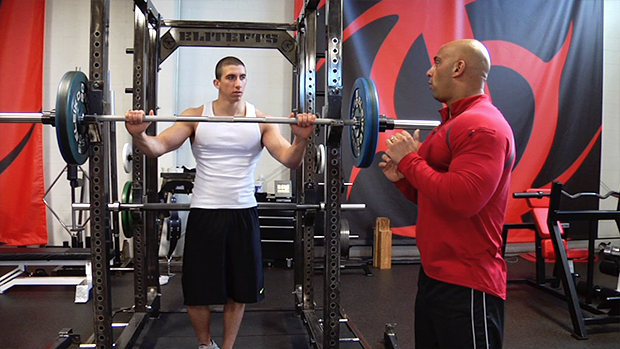Here's what you need to know...
- Size and strength are important for lifters, but so is skill. You develop skill through repetition.
- Do your "daily" lifts every time you walk into the gym, at the end of your warm-up but before doing the day's main lifts.
- Choose exercises that you're able to perform efficiently and recover from quickly. Limit eccentrics as much as possible.
If it's important, do it every day.
That's sound advice from Coach Dan John. But if you deem the big lifts important, how are you supposed to do them every day and still recover?
It's simple. You just have to keep a few concepts and parameters in mind. It starts with understanding why.
Understanding the Purpose
The first and most obvious reason is if you want to be a great bencher you need to do a lot of benching.
Skill is often underappreciated. Everyone wants to talk size and strength, but each are subsidiaries of skill. Consistency and accumulation of hours makes everyone better.
Getting better, though, is the outcome of learning. This happens consciously as awareness of our movement during the lift increases, as it likewise does subconsciously through the interplay of our afferent and efferent nervous systems. Since the lifts that we're doing every day are done with high-tension and low-load, we create an efficient output and feedback loop between each system.
High-tension and fast execution means high nerve conduction velocity. Afferent nerve endings are more sensitive while efferent nerves have stronger output. It means we've trained our body to be efficient through conscious awareness of our movement and through unconscious proprioception. This makes us stronger.
When Do We Perform Everyday Lifts?
The easy answer is every time you step in the weight-room: three days per week, four days per week, whatever you've got.
During the session, however, placement is critical. You'll do them at the end of your warm-up before doing the day's main lifts. This is a great time for practice because you're fresh. It's also the time to ramp up your nervous system to handle the heavy sets to come.
Regulating Intensity
How heavy should you go? Not that heavy.
Performance is based on two requisites: tension and speed. If you're not tight, and the bar isn't screaming, the point is moot. To keep our nervous system ramped up and to train our afferent-efferent loop, high tension and high speed are musts.
Talking in terms of the Rate of Perceived Exertion scale, we're looking at a 6 or 7 weight out of 10. If you're a percentage aficionado, loads fall between 45 and 70%.
Progression is slow and shares a direct relationship with changes in volume. You'll only move up slightly every week – five pounds for upper-body lifts and ten pounds for lower/full-body lifts.
Regulating Volume
As with any good loading parameter, volume has a direct relation to intensity. More intensity means less volume.
Our everyday lifts are followed by main training lifts and subsequent assistance work, requiring a careful approach to volume loading. It's simple with a few parameters.
Start by keeping the total amount of reps at twenty or less. Wave the volume up and then down, planning a volume peak in the middle of your training phase. Then dial it down on the back half of the phase and increase intensity. Start with sets of 4 or 5 and decrease to sets of 1 as the volume peaks and valleys.
Here's an example of what I mean, taken from a client's program. He used it to load the deadlift and reverse-band bench press:
- Week 1: 3 x 4
- Week 2: 4 x 3
- Week 3: 4 x 4
- Week 4: 2 x 3
- Week 5: 3 x 5
- Week 6: 4 x 4
- Week 7: 5 x 4
- Week 8: 3 x 2
- Week 9: 3 x 5
- Week 10: 4 x 3
- Week 11: 5 x 3
- Week 12: 4 x 1
He started week one using 200 pounds for his deadlift and finished using 315 on week twelve. He deadlifted 465 at the end of the cycle. (His pre-program max was 435 pounds.)

Choosing Lifts
All the other components are in place. Now what lifts can be done every day and how do we choose which lifts to do?
Under the parameters of high-tension and low-load, you can do almost any exercise every training day, but it's best to choose exercises in which the eccentric phase can be limited. Olympic lifts are a great example. But most of us aren't Olympic lifters, so how do we choose? First, consider your goals.
Keep in mind what you want to accomplish and exercise selection follows suit. Want to squat big? Squat often, then consider all the other components that make you a better squatter.
After you figure out your goals, think about your movement and what works for your body. If even moderate overhead pressing volume leaves you feeling like you sprinted into a wall 40 times, then you shouldn't overhead press every day. The same is true for every other lift. I know it's obvious, but I also know how stubborn lifters are.
For high-tension, low-load everyday lifts, choose exercises that you're able to perform efficiently and recover from quickly. After that it becomes a matter of logistics. What equipment do you have?
Let's say you're training to increase your deadlift and you need to learn better lat tension. You have two barbells, a power rack, and bands available.
We'll use the snatch-grip deadlift to learn lat tension. And to keep the output high so we can keep our nervous system ramped-up, we'll use the reverse-band bench press.
We'll superset them in an A1/A2 format and apply the volume and intensity considerations listed above.
Let's recap:
- Limit eccentrics (the lowering or negative phase) as much as possible.
- Pick lifts that you have the requisite mobility and stability to do efficiently and recover from quickly.
- Pick movements based on your goals. Want to deadlift more? Deadlift often.
Self-Care
Overuse raises a red flag of horror for a lot of folks when they consider high-frequency training. Concern is warranted, but the risk of injury is lower than most naysayers expect.
The easiest way to avoid injury while using everyday lifts, or with any training, is to practice consistent self-care. And the best self-care strategy starts by performing reps with consistently good form to distribute loads proportionately across joints and soft-tissues.
It doesn't hurt, though, to take a few extra precautions. Here are a few that have kept me and my guys going.
Aggressive Soft-Tissue Work
Lying on a foam roller and flopping around won't cut it. You're loading up your muscles and connective tissue with consistent tension, so you'll need more than a few masturbatory rolls. Nothing does the trick like well-placed softballs and lacrosse balls.
Think first about areas of disproportionately high tissue-stress – the shoulder girdle, the hips, and the quads/hams. These are the areas we'll get after.
The shoulder girdle gets the lacrosse ball treatment – upper-traps and pecs take priority. Work on them by pinning the ball between the given muscle and a squat rack.
Unfortunately, the lacrosse ball isn't big enough to get enough compressive load on the tissues around the hips, so we heal the hips with the softball by lying on it on the floor and working from front to back.
Quads and hamstrings also get the softball treatment. Lie or sit on it in the middle of the muscle belly and let it get in there nice and deep.
Rather than using each technique listed above for a few passing seconds, spend two concentrated minutes on each area. This allows for enough time to positively affect the tissue.
Break Linear Patterns
As awesome as high-tension, low-load barbell lifts are, they lock us into linear movement patterns – lots of tension moving loads straight up and straight down. This is great for strength, but after a while the tension and consistency add up and your overall movement suffers. So, every so often, you need to do something that isn't tight and linear.
Here's a very simple solution: the world's greatest stretch.
Readiness Barometer
I'm a believer in the power of intuition – our abilities to thin-slice a situation and figure it out quickly are impeccable. It's also true, however, that lifters are stubborn.
We'll tell ourselves anything we have to in order to train hard, often disregarding our better judgment. So to keep ourselves from sprinting into the proverbial wall we need a semi-objective measure of training readiness.
Heart Rate Variability (HRV) systems are popular now, and for good reason. Here's an easy way to do it without a device: Take your resting heart rate every morning when you wake up. Be consistent for a few weeks so you have an ideal baseline. Take note of big fluctuations and any stimuli that may have brought them on – training load, diet, sleep, etc. Compare and contrast those fluctuations with your mental and physical state.
For example, if your resting heart rate is ten beats higher than normal and your training motivation is low, it's a good day to rest or cut back on volume.
Every Damn Day
Outcome is the product of habit. Decide what lifts are important, load them properly, and do them every day.





